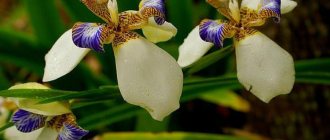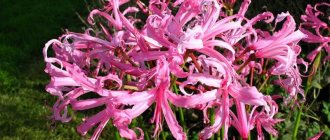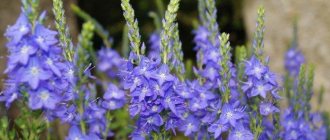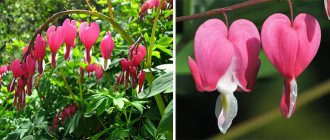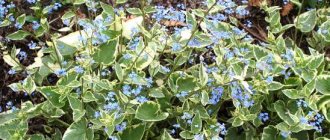Cleome is a wonderful garden flower that will help decorate any corner of your garden with its delicate and sophisticated look. The flowering of cleome delights with its appearance, similar to the explosion of champagne, and the stately greenery can surprise the most demanding gardener. Today we will talk in detail about how to grow cleome in your garden, how to provide the plant with proper care and protect it from the cold winter.
Cleome is a fairly hardy and undemanding plant that tolerates sudden changes in climate and temperature. It is truly an original decoration for the garden of the person who decided to give the cleome the opportunity to show itself and all its beauty.
Externally, this plant is an erect stem, the height of which reaches one and a half meters. Its upper part is decorated with an inflorescence that is very reminiscent of a centipede spider. The plant is very durable, bushes well, and is quite resistant to adverse weather conditions - wind, rain, etc. Cleome has a well-developed and powerful root system, which actively feeds the plant with necessary substances from the soil and strengthens it.
Cleome leaves are of two types - smaller in the upper part of the stem, and large in the middle and lower parts. The leaves are arranged along the stem in a regular order, have a light green color, and are covered with small spines on the inside. At the base of the leaves there are small stipules that form hard spines. That is why the plant received its second name - prickly cleome.
The entire plant is covered with very small hairs, which have sticky glands in their structure that secrete juice. Due to this there is an interesting aroma.
Cleome flowers with varied, uneven colors, which are collected in small racemose inflorescences, approximately 3-4 cm in diameter, look especially original and attractive. But, most often, the flowers, of which the plant has quite a lot, are colored yellow, purple, white, violet or pink. They also have a very pleasant aroma, which is what Cleome prickly is famous for.
This beautiful plant blooms from June to September. The lower flowers of the inflorescence bloom immediately, then the upper ones. At this time, the inflorescence stretches.
Cleome fruits are medium-length, pod-shaped seed pods with yellow or black seeds.
Cleome flower: description
A plant from the cleome family reaches a height of up to one and a half meters and has straight, branched stems at the top, which, together with shoots and leaves, are covered with sticky hairs.
The light green leaves on long petioles are of different sizes - quite large closer to the ground, but very small at the top. They are dissected into 5–7 lobes and at the very base have stipules that form hard spines.
The flower did not get its name “champagne splashes” in vain. Four pink or white petals located on one side, and the stamens and pistil on the other, create a very unusual appearance, reminiscent of a splash of tiny droplets. Recently, varieties with yellow and blue flowers have also been developed. The inflorescences are very large - up to 20 cm in diameter. The smell of cleome is very unique and not everyone likes it, but it is of great importance for the plant: pollinating insects flock to it, and it is especially attractive to bees. In its homeland in the tropics, even small species of bats pollinate cleome.
When the flowers wither, seed pods are formed in their place, located on long legs and directed in different directions, thanks to which the plant becomes like a spider. In Germany and Great Britain this plant is often called the spider flower. The seeds are very small - in 1 gram you can count up to 400 of them. Cleome blooms for a long time - from June until frost.
Types with photos and names
Salicornosa (Hatiora salicornioides)
This is the most common type of hatior. It is distinguished by particularly thin and fragile shoots. Small segments reach no more than 2.5 centimeters in size and are shaped like bottles. The size of an adult plant is about 40 centimeters. It blooms with yellow, pink or orange flowers. After flowering, small berries appear on the shoots.
Pink (Hatiora rosea)
The shape of the segments is flat, slightly ribbed . On the sides there are rudimentary spines in the form of light hairs. This species is distinguished by large pink flowers.
Hermine (Hherminiae)
The segments are round in shape up to 5 centimeters in length. Grows in the form of an upright bush. During flowering it is covered with dark pink flowers.
Gartner
The size of the flat segments reaches 7 centimeters. They have small notches along the edges. It blooms with large flowers of red or crimson hue.
Graeseri
This is a hybrid species created by crossing two species of plants - Hatiora rosea and Hatiora Gartner. The shape of the shoots is flat. Burgundy-red flowers appear in spring .
Five-winged (Pentaptera)
The segments consist of five faces. It grows as a shrub with drooping shoots. Blooms with white small flowers.
Features of care
A rather unassuming plant is the champagne splash flower. Caring for it comes down to moderate watering and fertilizing, provided that the right area for planting is chosen. Cleome prefers sunny, warm and wind-protected places with neutral, fertile soil. Replanting for this flower is undesirable, so the choice of location should be taken seriously.
The plant should be watered as needed - if the soil dries out, because due to excess moisture, the flowers may lose all their decorative effect. After watering, the soil must be loosened. The plant does not require frequent feeding; it is enough to apply complex mineral fertilizer once every two weeks at the rate of 2 tablespoons per bucket of water. For weakened or diseased plants, you can spray the bush with a fertilizer solution (1 teaspoon per 3 liters of water) from a spray bottle.
“Splash of champagne” is a frost-resistant flower, so it does not require shelter for the winter. To make the flower more luxuriant, it is recommended to pinch the top, and spraying with zircon (1 ml per 1 liter of water) will help speed up flowering.
Diseases and pests
Caring for the hatiora plant also involves the process of surgical treatment for fungal and bacterial diseases, as well as pest control. Not in all cases, the use of chemicals can help a succulent. The cactus is periodically inspected for small wet spots. These are signs of bacterial infection. At the beginning of treatment, old affected shoots of hatiora must be removed independently. In extreme cases, to solve the problem, healthy segments of the plant are separated from the diseased bush and rooted.
As a result of improper care, stem rot may form on the hatiora.
When the root system of the hatiora is affected by rot, the stems and flower segments lose their rich green color, and the plant begins to wither. To rid the flower of the disease, watering the cactus should be stopped and the soil should be treated with a fungicide.
The cactus can also suffer from insect pests such as mealybugs, spider mites, scale insects, and whiteflies. If you don’t have insecticides on hand, you will have to use a soap solution. The preparations “Aktara” and “Confidor” have an effective effect against pests; with their help, the plants will be protected.
Procurement of seeds
Cleome reproduces exclusively by seeds. They are able to remain viable for up to 3 years.
The seeds are collected in the fall, when the pod ripens and opens easily when pressed. You can determine its degree of maturity by its color - it becomes darker. You cannot keep the seeds on the plant, because the pods, when ripe, burst and all their contents end up on the ground. To prevent this, you can place some of them in gauze bags in advance. Then, when the pod opens, the seeds will not fall on the ground, but will remain in the bag.
How to propagate a flower
There are 3 main types of propagation of hathiora cactus:
- Seeds;
- Graft;
- Cuttings.
Hachiora shoots
Breeders use the seed method to obtain new species. This method is practically not suitable for propagating plants at home.
Small roots appear on the hatiora segment
Amateur flower growers usually use hatiora propagation by cuttings. This is the simplest and fastest method. To do this you need:
- Part of a hatiora shoot whose length is 3-4 segments;
- Wait until the succulent cuttings become limp; to do this, place them in a dark place for several days;
- Soak the base of the plant shoot in a root formation stimulator, and then plant it in a moist substrate.
In Hatiora gaertneri, the flower diameter reaches 5-6 cm
The place for rooting the cactus is chosen to be bright, but not in direct sunlight. If the future flower is provided with greenhouse conditions with optimal temperature, air humidity and lighting, the root system will quickly grow. The appearance of the first buds and flowering of hatiora is possible as early as next year.
Hatiora can be grown indoors using grafting. Perexia spinosa plants will act as a rootstock. Vaccination must be carried out step by step:
- Separate a small shoot from the hatiora, up to 3 segments, and sharpen its base;
- The branched parts of Perexia spinosa need to be cut off and a vertical cut made in the center of the stem;
- Insert the hatiora graft into the cut in the stem of Perexia spinosa, and secure the area with a plaster.
After 3-4 weeks, the graft should take root on the plant. As soon as it begins to grow, the patch can be removed. Until this period, the flower should be kept in a place where the temperature does not exceed 20 degrees. This method of breeding hatiora differs from others in that when the plant blooms it has many more buds.
Hatiora gaertneri blooms
Growing cleome from seeds
Despite its tropical origin, the “champagne splash” flower grows quite well in central Russia. Propagation by seeds involves sowing them directly into open ground. But for early flowering of this plant it is better to use the seedling method. You need to start growing seedlings at the end of February. The seeds are first soaked for 12 hours in “Epin” (2 drops per glass of water) and then sown in a prepared container with a soil mixture prepared from humus, sand and garden soil. The same mixture is sprinkled on top and the container is covered with glass.
Seedling care and planting
After 2 weeks, when the first shoots appear, the container with the seeds is placed in a well-lit place, periodically ventilated and moisten the soil as necessary. After the first pair of true leaves have formed on the sprouts, they can be planted in peat pots.
“Splash of champagne” is a flower that loves light very much, so in order to prevent the plants from stretching towards the sun, developing only in one direction, the pots need to be turned from time to time. Weak seedlings whose leaves are pale in color can be fed with complex fertilizer by dissolving 1 teaspoon in 3 liters of water.
Plants are planted in open ground after the end of frost, usually in early June. A suitable area is selected where there is enough light, which the “champagne splash” flowers love so much. Planting requires taking into account the features of landscape design. When digging, it is recommended to add rotted compost to the soil with the addition of flower fertilizer at the rate of 2 tablespoons per 1 square meter. meter.
Before planting seedlings, they must be sprayed with Epin solution. To prevent plantings from thickening in the future, contributing to the appearance of fungal diseases, pots with seedlings should be placed at a distance of at least 50 cm from each other. The planted plants are watered with a humate solution.
Choosing a variety for planting
Only two types of cleome, out of more than 70 existing ones, are used as ornamental plants - Hessler's cleome and spiny cleome. When developing new varieties of plants, these two species are crossed with each other.
Popular varieties bred from prickly cleome:
- Helen Campbell. A plant with white flowers.
- Pinkquin, Rosequin, Rosakeningen - a group of varieties with a pinkish tint to the inflorescences.
- Gold Sparkler is a variety no higher than 40 cm high with yellow petals.
- Giant Pink Cuisin - bushes 60-80 cm high, dark pink.
- Lavender Sparkler - light purple inflorescences.
- Violetquin - dark purple inflorescences.
The Cherry Queen variety is also very popular among gardeners among plants derived from Cleome prickly. It has an average bush height (no more than 60 cm) and elongated flowers. Although they are collected in inflorescences, they are so distant from each other that they give the impression of individual flowers.
The rules for growing different varieties of cleome are the same, since the timing of the various stages of the plant’s life, vegetation, flowering and fruiting, are completely identical.
Use in landscape design
The cleome flower (“spray of champagne”) is widely used in the design of garden plots due to the ability to use it to decorate any barriers, structures and create all kinds of hedges. These flowers look impressive against the background of bright green plants and among low-growing flowers.
Cleome looks very beautiful in a composition with many plants - multi-colored phlox, rudbeckia, pink and white echinacea and other perennial and annual flowers. Due to the presence of thorns, it is not recommended to plant it in the foreground in flower beds or along paths.
A bouquet of these flowers can last in a vase for up to 15 days. To do this, they are cut off in the evening and, having removed the thorns, left in water in the fresh air overnight and only brought into the house in the morning. Cleome will not only fill the room with a pleasant aroma, but will also neutralize the air.
Indoor flower cleome
Usually this unusually beautiful annual is planted in garden plots. But if you follow certain rules for caring for this plant, then an indoor “champagne splash” flower may well become an interior decoration. Following simple agricultural practices allows you to admire its amazing flowers for several years.
To do this, it is necessary to bring the conditions of its maintenance closer to natural ones. Considering that the homeland of cleome is the tropics, it should be placed on the sunniest windowsills, and the air temperature in the apartment in the summer should not fall below 20⁰C. In winter, coolness is required - about 15⁰C. Regular spraying will create the moisture necessary for a tropical plant.
Otherwise, “champagne spray” flowers are quite unpretentious and hardy. Planting and caring for them does not cause any particular difficulties even for novice gardeners. It is enough to provide regular watering and fertilizing with regular fertilizer for indoor flowering plants.
